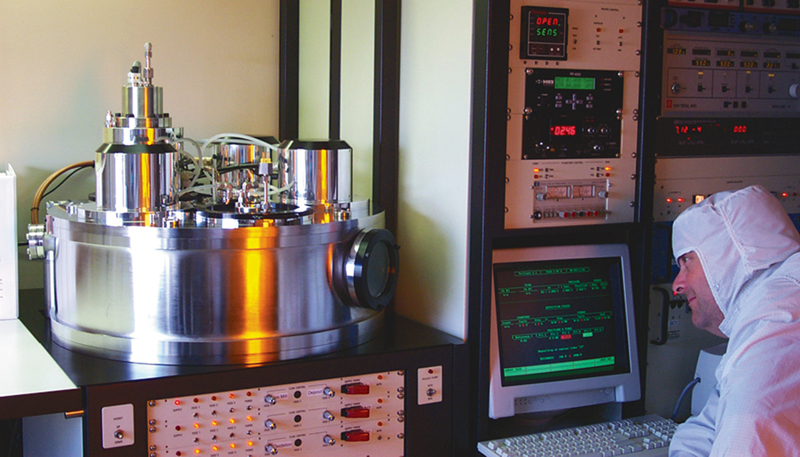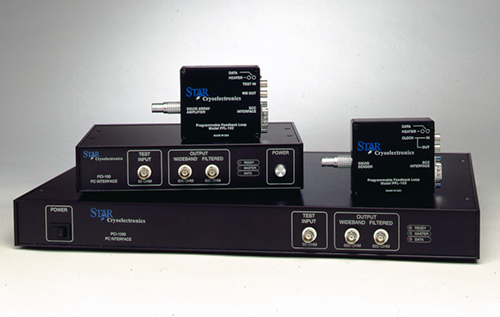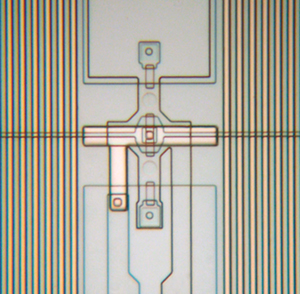
Tracking Electromagnetic Energy With SQUIDs
Originating Technology/NASA Contribution
A superconducting quantum interference device (SQUID) is a gadget used to measure extremely weak signals, specifically magnetic flux. It can detect subtle changes in energy, up to 100 billion times weaker than the electromagnetic energy required to move a compass needle. SQUIDs are used for a variety of testing procedures where extreme sensitivity is required and where the test instrument need not come into direct contact with the test subject.
NASA uses SQUIDs for remote, noncontact sensing in a variety of venues, including monitoring the Earth’s magnetic field and tracking brain activity of pilots. Scientists at NASA’s Goddard Space Flight Center have been making extensive use of this technology, from astrophysical research, to tracking the navigational paths of bees in flight to determine if they are using internal compasses.
These very sensitive measurement devices have a wide variety of uses within NASA and even more uses within the commercial realm.
Partnership
STAR Cryoelectronics, LLC (STARCryo), of Los Alamos, New Mexico, specializes in developing, manufacturing, and marketing ultrasensitive SQUID sensors and advanced personal computer-based SQUID control electronics. Its customer base is worldwide.
STARCryo was successful in obtaining NASA Phase I and II Small Business Innovation Research (SBIR) contract funding to develop new technologies and bring them to market. This funding included performing advanced electronics and sensor work at Goddard. The work involved generating voltage gain through arrays and cryogenic amplifiers for detectors.
Product Outcome
STARCryo’s SQUID is the most sensitive detector of magnetic flux available, making it ideal for a variety of uses, including high-resolution measurements of current, voltage, magnetic field or field gradient, gravitational field, and magnetic susceptibility. STARCryo now offers an extensive range of SQUID sensors and packaging options for applications in biomedical imaging, nondestructive testing of materials, geophysical exploration, and basic research.
STARCryo’s SQUIDs are in use at major university, government, and corporate research laboratories all throughout the world.
The PC-based SQUID control-electronics that STARCryo manufactures are marketed under the trade name pcSQUID and offer unsurpassed flexibility and performance for single- and multi-channel applications, in addition to being convenient and easy to use. A convenient interface for Microsoft Windows puts the SQUID control on the computer, fully integrated with data acquisition and analysis tools.
STARCryo’s sensors are used at medical research centers around the world to record and localize the magnetic signals associated with neural activity in the brain. Magnetoencephalography (MEG), the monitoring of magnetic fields in the brain, is emerging as the primary tool for investigating brain wave activity. Other competing techniques, such as magnetic resonance imaging (MRI) and positron emission tomography (PET), cannot offer the millisecond temporal resolution attainable with MEG.
MEG is an essential tool for mapping functional brain activity and may be superposed with MRI data in order to correlate localized brain activity with anatomical information. The data are invaluable for pre-operative surgical planning, and insurance companies in the United States are now paying reimbursements for the procedure.
STARCryo’s pcSQUID is also being used with magnetocardiography (MCG), a modern medial approach to monitoring heart health, primarily a patient’s risk of sudden cardiac death, a disease that claims over 300,000 lives in the United States each year. STARCryo’s ultra-sensitive SQUID sensors are ideally suited for applications such as MCG.
The SQUID sensors have also found applications in the field of nondestructive evaluation (NDE), where they are ideal, due to their extraordinary sensitivity and enormous bandwidth. The NDE applications fall into three categories: imaging of surfaces and sub-surface features, flaws, defects, and voids in materials; imaging of materials that have been pre-magnetized by a pulsed or static background magnetic field; and imaging of intrinsic or applied electric currents in electronic circuits or materials.
In the aerospace industry, SQUIDs are being used to obtain magnetic images of cracks in aircraft wheel rims and to inspect jet engine turbine blades, as well as to image defects in models of typical aircraft lap joints. Other applications include the evaluation of steel plates used to build ship hulls and the inspection of concrete infrastructures, such as bridgework.
STARCryo has also found use for their SQUIDs in the field of geophysical exploration. Again, due to their extreme sensitivity, small size, enormous bandwidth, and flat frequency response, they have been used for bore hole depth profiling, airborne surveying, transient electromagnetics, magnetoellurics, and controlled source audio magnetoellurics.
pcSQUID™ is a trademark of STAR Cryoelectronics, LLC.
Microsoft® and Windows® are registered trademarks of Microsoft Corporation.

STAR Cryoelectronics, LLC’s line of single- and multi-channel PC-based readout electronics for SQUIDs and SQUID amplifiers.

The input stage of a SQUID amplifier.

A process engineer depositing thin films used to fabricate SQUID devices.













